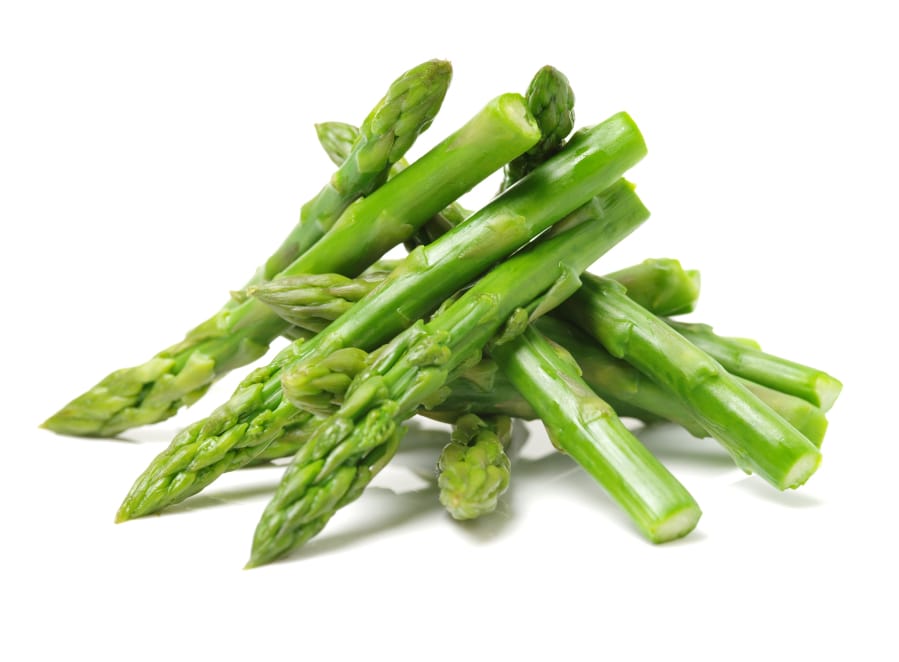When I was a child, I thought asparagus was soft, mushy and stringy. As an adult, I discovered that roasting, grilling and lightly steaming asparagus makes the stalks more enjoyable to eat by themselves or mixed with other great fresh vegetables in a lovely stir-fry. My husband enjoys tossing asparagus into scrambled eggs in the mornings.
Asparagus comes in three colors: green, white and purple. The green variety is the most popular and easiest to find. White asparagus is planted in mounds called hillings and is deprived of sunlight. This prevents the development of chlorophyll, which is the green pigment in plants. Purple asparagus is sweeter than the white or green. The purple color is only skin deep; the flesh is pale green and less fibrous, hence more tender.
Select asparagus spears that are firm, straight and smooth with compact tips, a rich fresh color and no brown spots. The ends should not look dry or flaky. Often you will see spears standing in a small amount of water to help keep the ends moist.
I was always under the impression that the thinner spears of asparagus are the best. They are a bit more flavorful, but they are also very tender and will overcook quickly. They are best used in stir fry or tossed into salad or scrambled eggs. Asparagus stalks that are small, standard, large or jumbo are equally tasty. Just be sure to select bundles of spears that are similar sizes so they cook evenly.
Asparagus should be stored like flowers — upright, with the ends kept moist. Stalks will last that way up to a week. Cut about a half-inch off the end of stalks and place them in a jar filled with a half-inch of water. Put a loose plastic bag over the top and store the jar in the refrigerator. (If the spears are not covered, they could take on flavors of other things in the fridge.) No room in the refrigerator to stand up your asparagus? Just wrap a dampened paper towel around the trimmed ends and place the stalks in the fridge’s vegetable bin. Replace the paper towel every couple of days to keep the asparagus moist.
Just before cooking, wash under cool water to remove grit. Then hold a spear horizontally in one hand and with the other hold the tip and press down. As the spear curves downward, it will naturally break where it starts to become firm or woody. Discard the end pieces or toss them in the freezer to be used in soups later.
Asparagus can be easily prepared by steaming, grilling, roasting or sauteing. It is a versatile vegetable that can be eaten at any meal as a side dish, or in omelets, stir-fries, salads, pastas and scrambled eggs.
My favorite way to prepare is to roast or grill it. Toss 1 pound of prepared spears in a tablespoon of olive oil and sprinkle with your favorite herb. Place on a cookie sheet and put in a 425-degree oven for 10 to 20 minutes depending on the size of the spears. Asparagus is done when you can poke it with a fork but it still feels a bit firm. To try grilling them, marinate spears in your favorite vinaigrette dressing for about 1 hour. Place spears on hot grill, turning after 3 to 4 minutes until they are tender and charred. Before serving sprinkle with crumbled feta or goat cheese.



